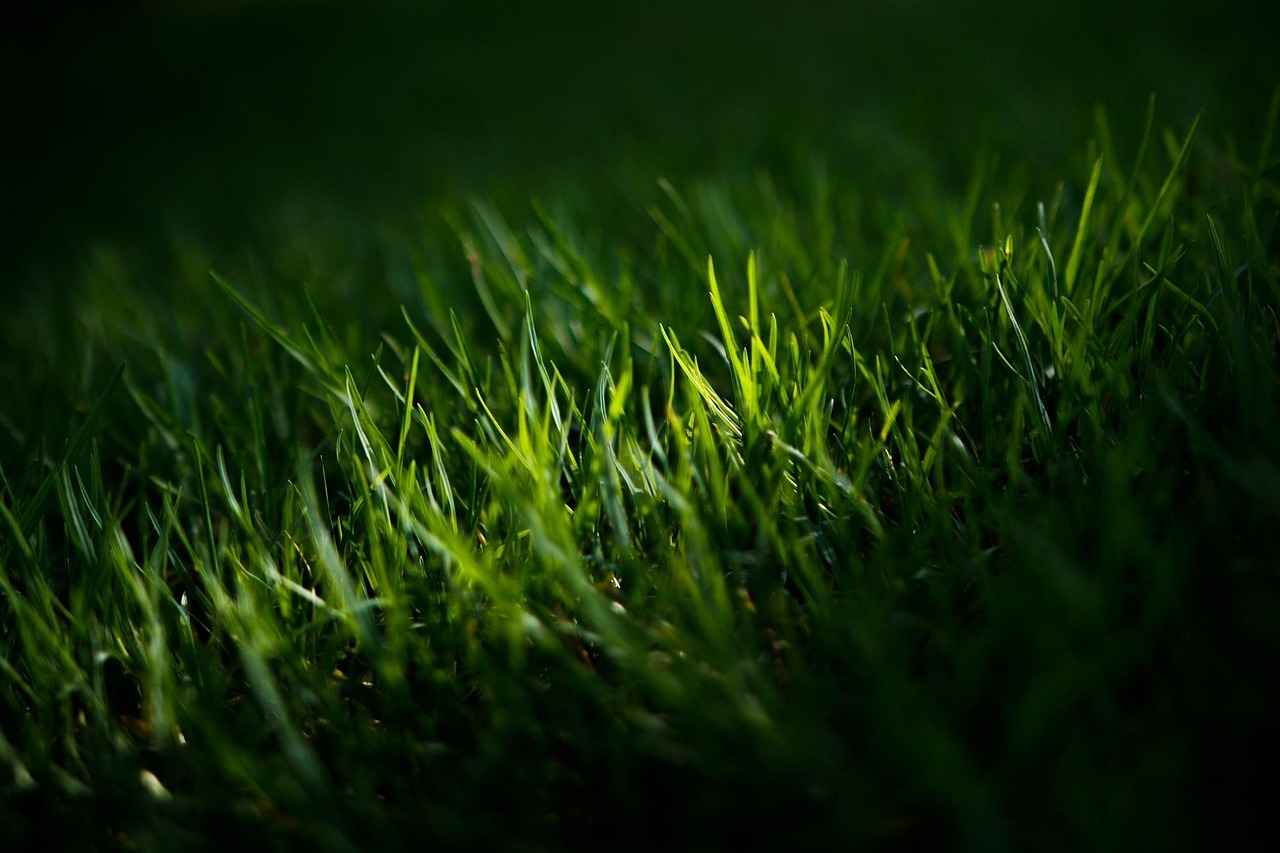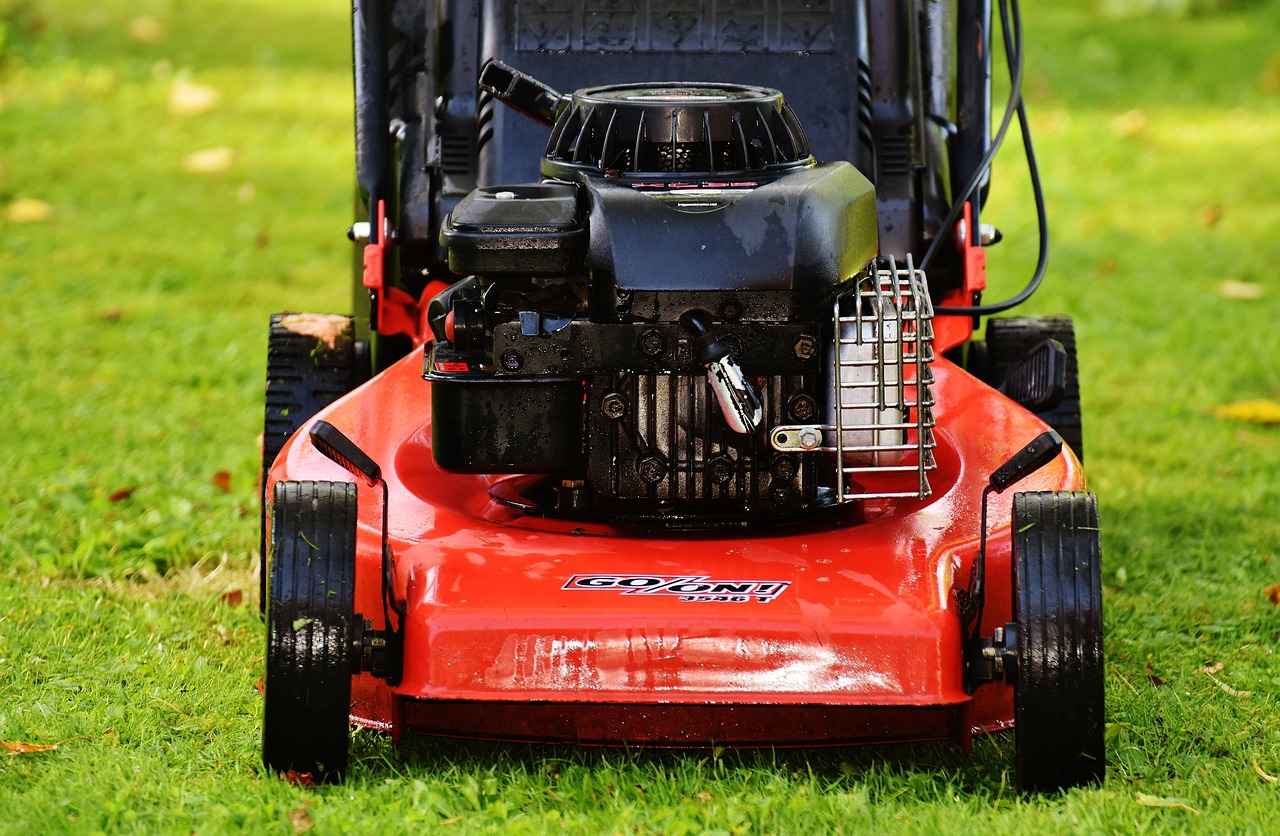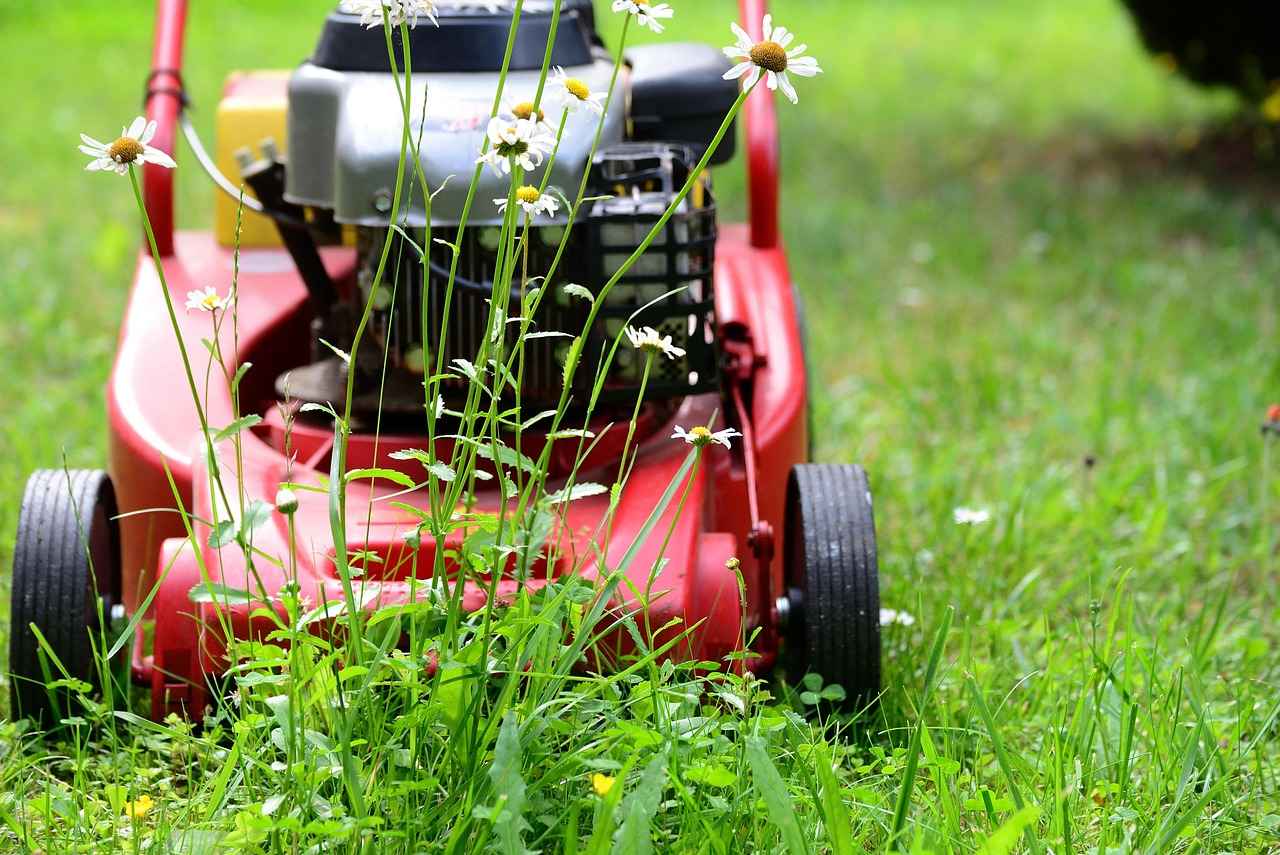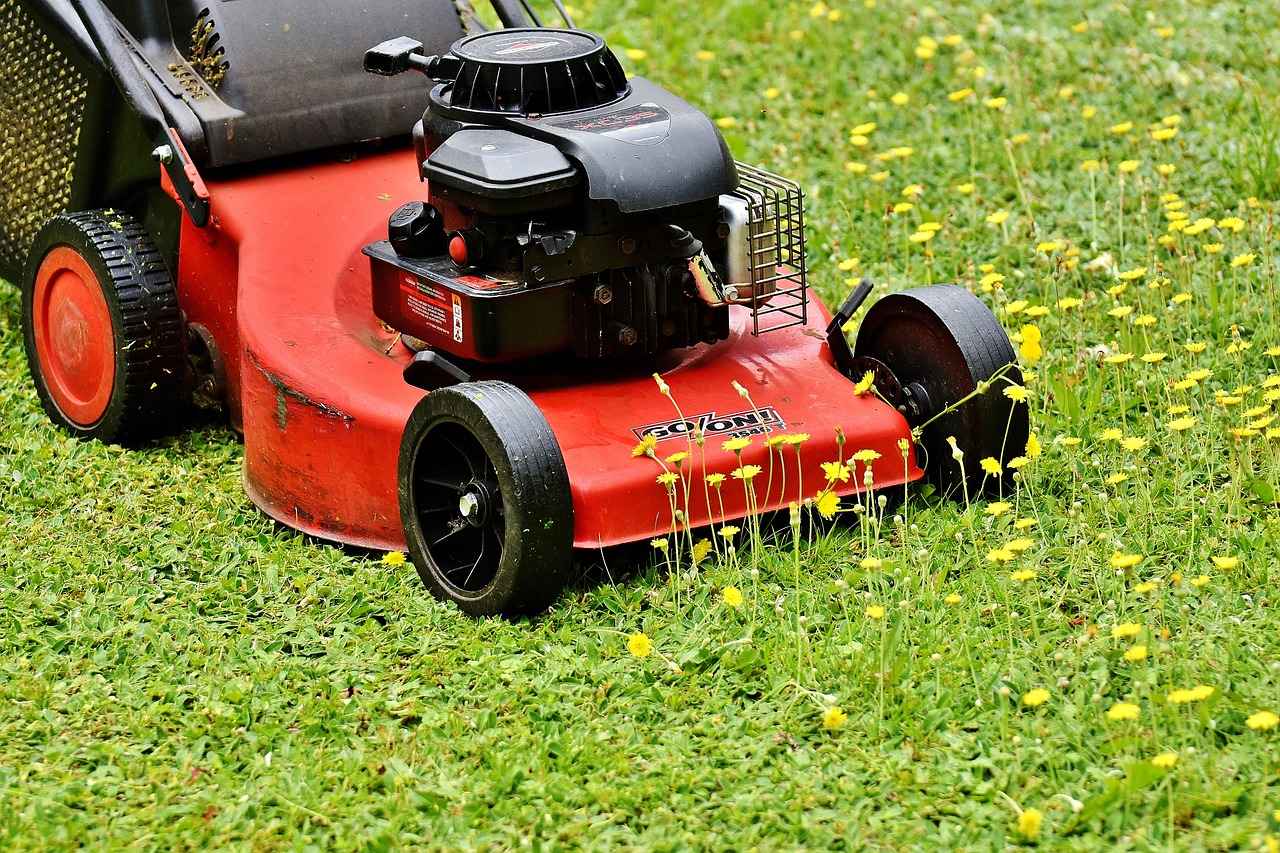This article provides essential tips and techniques for preparing your ground for sod installation, ensuring a lush and healthy lawn. Follow these steps for optimal results.
Understanding the importance of proper ground preparation can significantly impact the success of your sod installation. A well-prepared ground promotes healthy root growth and minimizes future lawn problems. Without proper preparation, sod may struggle to establish itself, leading to patchy growth and increased maintenance.
Gathering the right tools is essential for an efficient sod installation process. Below are the must-have tools to ensure your ground is perfectly ready for sod.
- Shovels: For digging and moving soil.
- Rakes: To level the soil surface and remove debris.
- Hoes: Useful for breaking up compacted soil.
Using soil test kits can provide valuable insights into your soil’s pH and nutrient levels. This information is crucial for amending the soil appropriately before laying sod.
Compactors and rollers are useful for ensuring the soil is firm and level. Proper compaction prevents air pockets, which can hinder root establishment.
For larger lawns, consider using advanced tools like tillers and sod cutters. These can save time and effort, making the preparation process more efficient.
Clearing the area of existing vegetation and debris is a critical step in preparing your ground. A clean slate allows for better sod installation and growth.
Using a sod cutter can simplify the removal of existing grass and weeds. This step is essential to prevent competition for nutrients and water.
Ensure the area is free of rocks, sticks, and other debris. This not only improves the appearance but also creates a smoother surface for the sod.
Amending the soil before laying sod can significantly enhance its nutrient content, promoting healthier grass growth. Here are some common amendments to consider.
Incorporating organic matter, such as compost, enriches the soil and improves its structure. This enhances moisture retention and provides essential nutrients for the sod.
Applying a starter fertilizer can give your new sod an immediate nutrient boost. Choose a fertilizer high in phosphorus to encourage strong root development.
A level surface is crucial for sod installation, as it ensures even water distribution and prevents pooling. Here’s how to achieve a perfectly leveled ground.
Use a rake to spread soil evenly across the area, filling in low spots and removing high spots. This creates a smooth, flat surface for your sod.
After leveling, check for proper drainage to avoid water accumulation. If necessary, adjust the slope to direct water away from structures and prevent soggy patches.
Timing your sod installation can greatly affect its success. Understanding the best seasons for laying sod can lead to a thriving lawn.
The best times to lay sod are typically in early spring or early fall. These seasons provide optimal temperatures and moisture levels for sod establishment.
Avoid laying sod during extreme heat or cold. Monitoring weather conditions can help ensure that your new lawn has the best chance to thrive.

Why is Ground Preparation Crucial for Sod?
When it comes to achieving a vibrant and healthy lawn, ground preparation plays a pivotal role. Many homeowners underestimate the significance of preparing the soil before laying sod, which can lead to a host of future lawn problems. This article delves into the reasons why ground preparation is crucial for sod installation, highlighting its impact on root growth and overall lawn health.
Understanding the importance of proper ground preparation can significantly impact the success of your sod installation. A well-prepared ground promotes healthy root growth and minimizes future lawn problems. Here are some key reasons why ground preparation is essential:
- Root Establishment: Properly prepared soil allows roots to penetrate easily, ensuring that the sod can establish itself quickly. This is vital for the sod to absorb nutrients and moisture effectively.
- Soil Aeration: Ground preparation often involves aerating the soil, which improves air circulation around the roots. Good aeration is crucial for healthy growth and helps prevent issues like root rot.
- Weed Prevention: Clearing the ground of existing vegetation and debris minimizes competition for nutrients and water. This step is critical to help the new sod thrive without interference from weeds.
- Moisture Retention: Well-prepared soil can retain moisture better, reducing the need for frequent watering. This is particularly beneficial during hot months when sod is vulnerable to drying out.
- Soil Nutrient Balance: Preparing the ground allows you to amend the soil with necessary nutrients. Testing the soil and adjusting its pH can create an optimal environment for sod growth.
To further emphasize the importance of ground preparation, consider the long-term benefits. A well-prepared lawn not only looks good but also requires less maintenance and is more resistant to pests and diseases. This can save homeowners both time and money in the long run.
To ensure successful sod installation, follow these essential steps for effective ground preparation:
- Clear the Area: Remove any existing grass, weeds, rocks, or debris. A clean area allows for better sod placement and root establishment.
- Test the Soil: Conduct a soil test to determine pH and nutrient levels. This information will guide you in amending the soil appropriately.
- Add Organic Matter: Incorporate compost or other organic matter to improve soil structure and fertility. This enhances moisture retention and nutrient availability.
- Level the Ground: Use a rake to ensure the ground is level, filling in low spots and removing high areas. A smooth surface promotes even water distribution.
- Compact the Soil: Lightly compact the soil to eliminate air pockets, which can hinder root establishment. However, avoid over-compaction, as it can restrict root growth.
By following these steps, you create an ideal environment for your sod to thrive. Proper ground preparation is not just a preliminary task; it is the foundation for a lush, green lawn that can withstand the test of time.
In summary, investing time and effort into ground preparation before laying sod is essential for achieving a healthy and beautiful lawn. Understanding the significance of this process will not only enhance the appearance of your outdoor space but also contribute to the longevity and resilience of your grass.

What Tools Do You Need for Ground Preparation?
When preparing your ground for sod installation, gathering the right tools is essential for an efficient process. The tools you choose can significantly affect the quality of your lawn. Below, we outline the must-have tools that will ensure your ground is perfectly ready for sod.
Basic gardening tools are the foundation of any successful sod installation. Here are the primary tools you should consider:
- Shovel: Ideal for digging and moving soil, a sturdy shovel is essential for breaking up compacted ground.
- Rake: A rake helps to level the soil and remove debris, ensuring a smooth surface for sod placement.
- Hoe: Perfect for breaking up soil clumps and preparing the earth for sod.
Understanding your soil’s condition is crucial before laying sod. Soil test kits provide valuable insights into pH levels and nutrient content. This information allows you to amend the soil effectively, promoting healthy sod growth.
To achieve a level surface, compactors and rollers are invaluable. These tools help eliminate air pockets in the soil, which can hinder root establishment. Proper compaction ensures that the sod has a solid foundation to grow from.
If you’re working with a larger lawn, consider investing in advanced tools that can streamline the preparation process:
- Tiller: A tiller can make quick work of breaking up soil and mixing in amendments.
- Sod Cutter: This tool simplifies the removal of existing grass and weeds, making way for new sod.
Before laying sod, it’s important to have a clean area free from existing vegetation and debris. Here are some tools that can help:
- Sod Cutter: Efficiently removes existing grass and weeds to prevent competition with new sod.
- Debris Rake: Use this to gather sticks, rocks, and other debris, ensuring a smooth surface for installation.
In addition to tools, consider using soil amendments to enhance the nutrient content of your soil. Common amendments include:
- Compost: Enriches the soil and improves its structure, aiding moisture retention.
- Starter Fertilizer: Applying a fertilizer high in phosphorus can give your new sod a crucial nutrient boost.
For a successful sod installation, a level surface is essential. Here’s how to achieve this:
- Leveling Rake: Use this tool to spread soil evenly and fill in low spots.
- Measuring Tape: Ensures that the area is accurately leveled and correctly sized for sod.
By gathering these essential tools and understanding their uses, you can prepare your ground effectively for sod installation. This preparation is key to achieving a vibrant and healthy lawn that will thrive for years to come.
Essential Gardening Tools
When it comes to establishing a beautiful lawn, having the right tools is essential. The process of preparing the ground for sod installation requires a variety of gardening tools that make the job easier and more efficient. Below, we explore the essential tools you need for successful ground preparation.
To effectively prepare your ground for sod, consider the following tools:
- Shovels: A sturdy shovel is indispensable for digging, turning soil, and moving materials. It helps in breaking up compacted soil and removing unwanted debris.
- Rakes: Rakes are crucial for leveling the soil surface and removing rocks, sticks, and other debris. A landscape rake is particularly useful for creating a smooth surface.
- Hoes: Hoes are perfect for breaking up hard soil and removing weeds. They allow for more precise soil cultivation and can help in creating furrows for better drainage.
- Sod Cutters: If you’re removing existing grass, a sod cutter makes the job quick and easy. It slices through grass roots, allowing for clean removal without damaging the soil underneath.
- Compactors: A soil compactor is essential for ensuring the ground is firm and level. This tool helps eliminate air pockets that can hinder root growth.
Using the right gardening tools not only speeds up the preparation process but also enhances the overall quality of your lawn. Here are some key benefits:
- Efficiency: Basic tools like shovels and rakes allow you to complete tasks quickly, saving time and effort.
- Soil Health: Properly prepared soil promotes healthy root growth, ensuring your sod establishes well and thrives.
- Reduced Competition: Removing existing vegetation and debris with the right tools minimizes competition for nutrients and water, giving your new sod a better chance to flourish.
The size of your lawn will influence the tools you need. For smaller areas, basic hand tools may suffice, while larger lawns may require more advanced equipment:
- Small Lawns: Hand tools like shovels, rakes, and hoes are typically enough for small spaces.
- Medium to Large Lawns: Consider investing in a sod cutter and a compactor, as well as renting a tiller for breaking up larger areas of soil.
Proper maintenance of your gardening tools ensures their longevity and effectiveness:
- Clean After Use: Remove soil and debris after each use to prevent rust and corrosion.
- Sharpen Blades: Keeping blades sharp ensures efficient cutting and reduces the effort required to use them.
- Store Properly: Store tools in a dry place to prevent moisture damage. Hanging them or using a tool rack can help save space and keep them organized.
By equipping yourself with the right tools and understanding their importance, you can ensure a smooth and successful sod installation process. Investing time in ground preparation will pay off with a lush, vibrant lawn that enhances the beauty of your outdoor space.
Soil Test Kits
When it comes to establishing a vibrant and healthy lawn, understanding your soil is paramount. One of the most effective ways to gain insights into your soil’s condition is by utilizing . These kits are invaluable tools that provide detailed information on the pH levels and nutrient content of your soil, which are essential for making informed decisions about soil amendments and sod installation.
Soil test kits are designed to analyze soil samples, revealing crucial data about its chemical composition. Knowing your soil’s pH is particularly important, as it affects nutrient availability and overall plant health. For example, most grasses thrive in a pH range of 6.0 to 7.0. If your soil is too acidic or alkaline, it can hinder nutrient uptake, leading to poor sod performance.
In addition to pH, soil test kits measure essential nutrients such as nitrogen, phosphorus, and potassium. These macronutrients are vital for grass growth and development. A soil test will indicate whether your soil is nutrient-rich or lacking, allowing you to amend it appropriately. For instance:
- Nitrogen promotes lush, green growth.
- Phosphorus aids in root development.
- Potassium enhances disease resistance and drought tolerance.
Using a soil test kit is straightforward. Here’s a step-by-step guide:
- Collect Soil Samples: Use a clean spade or trowel to collect soil samples from various locations in your yard, ideally from the top 6 inches of soil.
- Mix Samples: Combine the samples in a clean container to get a representative sample of your lawn.
- Follow Instructions: Each kit comes with specific instructions for mixing soil with the provided reagents. Follow these carefully for accurate results.
- Analyze Results: Once you receive your results, compare them against recommended levels for grass growth.
After obtaining your soil test results, you may need to amend your soil. Common amendments include:
- Lime: If your soil is too acidic, adding lime can help raise the pH.
- Sulfur: Conversely, if your soil is too alkaline, sulfur can lower the pH.
- Organic Matter: Incorporating compost can improve soil structure and nutrient content.
- Fertilizers: Based on nutrient deficiencies, apply specific fertilizers to boost nutrient levels.
Timing is essential when it comes to soil testing. It is best to test your soil at least a few weeks prior to laying sod. This allows ample time for necessary amendments to take effect. Ideally, conduct soil tests in the spring or fall when soil temperatures are moderate, ensuring accurate readings.
In summary, utilizing is a fundamental step in preparing your ground for sod installation. By understanding your soil’s pH and nutrient levels, you can make informed amendments that will lead to a thriving lawn. Investing time in soil testing will pay off in the long run, as it sets the foundation for a healthy and beautiful yard.
Compactors and Rollers
When preparing the ground for sod installation, play a crucial role in achieving a firm and level surface. These tools are essential for ensuring that the soil is adequately compacted, which significantly enhances the overall health of your future lawn.
Compactors and rollers are designed to compress soil, eliminating air pockets that can hinder root establishment. Proper soil compaction creates a solid foundation for sod, allowing roots to penetrate deeply and access necessary nutrients and moisture. This is especially important for new sod, as it needs a stable environment to thrive.
Compactors use weight and vibration to compress soil particles together, creating a denser surface. This process is vital in preventing future settling, which can lead to uneven patches in your lawn. By ensuring that the soil is compacted correctly, you reduce the risk of air pockets that can disrupt root growth.
There are various types of rollers available, each suited for different soil conditions:
- Water-filled Rollers: These are great for compacting soil as they provide consistent weight and pressure.
- Steel Rollers: Ideal for smaller areas, steel rollers are effective in leveling and compacting soil.
- Polyethylene Rollers: Lightweight and easy to maneuver, these are perfect for residential lawns.
To achieve the best results, follow these best practices when using compactors and rollers:
- Moisture Content: Ensure the soil is slightly moist but not wet. This optimal moisture level allows for better compaction.
- Multiple Passes: Make several passes over the area to achieve even compaction. Overlapping your passes will ensure that no areas are left uncompressed.
- Check for Levelness: After compacting, use a level or a straight edge to check for any uneven spots that may need further attention.
While using compactors and rollers, be cautious of common mistakes that can compromise your lawn preparation:
- Over-Compaction: Excessive compaction can lead to soil becoming too dense, making it difficult for roots to penetrate.
- Ignoring Soil Type: Different soil types require different compaction techniques. Clay soils, for example, may need more careful handling compared to sandy soils.
In summary, utilizing compactors and rollers effectively is essential for preparing the ground for sod installation. By ensuring that your soil is firm and level, you set the stage for a healthy, thriving lawn. Remember to follow best practices and avoid common mistakes to achieve the best results.
Advanced Tools for Larger Areas
When it comes to preparing larger lawns for sod installation, utilizing advanced tools can make a significant difference in efficiency and effectiveness. For homeowners or landscapers tackling expansive areas, the right equipment can save both time and effort, while ensuring a successful sod laying process.
Advanced tools like tillers and sod cutters are designed to handle the demands of larger spaces. These tools not only simplify the preparation process but also enhance the quality of the soil, ultimately leading to a healthier lawn.
- Soil Aeration: Tillers break up compacted soil, allowing air, water, and nutrients to penetrate deeper.
- Weed Control: Tilling disrupts existing weed growth, reducing competition for your new sod.
- Soil Mixing: Incorporating organic matter or amendments becomes easier with a tiller, promoting better soil health.
A sod cutter is an invaluable tool for removing existing grass and weeds efficiently. Here’s why:
- Precision: Sod cutters provide clean, precise cuts, minimizing soil disturbance.
- Time-Saving: Removing large sections of sod is quicker than manual methods, making it ideal for larger areas.
- Reduced Labor: Using a sod cutter significantly reduces the physical labor involved in clearing the ground.
In addition to tillers and sod cutters, consider other tools that can enhance your lawn preparation:
- Soil Compactors: These are essential for ensuring a firm and level surface, preventing air pockets that can hinder root establishment.
- Rakes and Shovels: Basic tools are still necessary for final adjustments and leveling the soil after using advanced equipment.
- Rollers: After laying sod, using a roller can help ensure good soil contact, which is crucial for rooting.
When selecting tools, consider the size of your lawn and the extent of the preparation needed. For lawns over 1,500 square feet, investing in a tiller and sod cutter can be beneficial. If your lawn is smaller, manual tools may suffice.
If you’re not a frequent landscaper, renting advanced tools may be a cost-effective option. Many local hardware stores and garden centers offer rental services for tillers and sod cutters, allowing you to access high-quality equipment without the full purchase cost.
Investing in the right tools for preparing larger lawns can greatly improve the efficiency and success of your sod installation. By utilizing advanced equipment like tillers and sod cutters, you can ensure a well-prepared ground that promotes healthy root growth and a thriving lawn.

How to Clear the Area Before Laying Sod?
Preparing your ground for sod installation is a pivotal step in achieving a lush and vibrant lawn. One of the first and most significant tasks is clearing the area of existing vegetation and debris. This essential process not only creates a clean slate for sod installation but also enhances the chances of successful growth.
When you clear the area, you eliminate competition for nutrients and water that existing plants may have. This step is crucial for ensuring that your new sod can establish strong roots and thrive in its new environment. A clean area also allows for better soil preparation, which is vital for a healthy lawn.
- Remove Existing Grass and Weeds: Begin by using a sod cutter or a shovel to remove any existing grass and weeds. This process can be labor-intensive, but it is essential to prevent unwanted growth from competing with your new sod.
- Clear Debris: After removing the grass, ensure that the area is free from rocks, sticks, and other debris. This not only improves the aesthetic appeal but also creates a smoother surface for sod installation.
- Inspect for Pests: Take this opportunity to check for any pests or diseases in the soil. Addressing these issues before laying sod can save you from future problems.
Having the right tools can make the clearing process much more efficient. Here are some essential tools to consider:
| Tool | Purpose |
|---|---|
| Sod Cutter | Efficiently removes existing grass and weeds. |
| Shovel | Useful for digging up stubborn roots and debris. |
| Rake | Helps level the soil and clear smaller debris. |
| Wheelbarrow | Facilitates the transport of debris and soil. |
To ensure a thorough job, consider the following best practices:
- Work in Sections: Divide the area into manageable sections to avoid feeling overwhelmed. This will also help you track your progress.
- Stay Safe: Wear gloves and protective gear to prevent injuries while clearing debris.
- Dispose of Waste Properly: Make sure to dispose of the removed vegetation and debris in an environmentally friendly manner.
Once the area is cleared, take a moment to assess the soil condition. A well-prepared ground that is free of debris and vegetation sets the stage for optimal sod installation. You may want to consider soil amendments to improve soil quality before laying the sod, ensuring that your new lawn has the best chance to flourish.
In conclusion, clearing the area of existing vegetation and debris is a critical step in preparing your ground. By following these steps, you will create a clean slate that fosters better sod installation and growth.
Removing Existing Grass and Weeds
When embarking on the journey of creating a beautiful lawn, is a crucial first step. This process not only clears the way for new sod but also ensures that your new lawn has the best chance to thrive without competition for resources.
Utilizing a sod cutter can significantly streamline the removal of unwanted grass and weeds. This specialized tool is designed to cut through the soil and grass roots, making it easier to lift and remove the sod in strips. By employing a sod cutter, you can:
- Save Time: The sod cutter quickly removes large sections of grass, reducing manual labor and speeding up the preparation process.
- Minimize Soil Disruption: Unlike traditional methods that may disturb the soil more than necessary, a sod cutter cuts cleanly, preserving the underlying soil structure.
- Enhance Efficiency: With the ability to adjust the cutting depth, you can customize the removal process to suit your specific lawn conditions.
To ensure that the removal process is effective, follow these steps:
- Assess the Area: Before starting, take a moment to evaluate the lawn. Identify areas with thick grass or persistent weeds that need attention.
- Prepare the Sod Cutter: Adjust the cutter to the desired depth, typically around 1-2 inches, depending on the thickness of the grass and soil conditions.
- Cut the Sod: Begin cutting along the edges of the area and work your way inward. Aim to create manageable strips that can be easily lifted and removed.
- Remove the Cut Sod: Once cut, lift the strips of sod and place them in a designated area for disposal or composting.
After clearing the area, it’s essential to prepare the soil for the new sod. This involves:
- Clearing Debris: Remove any leftover roots, rocks, or debris from the area to create a clean surface.
- Testing Soil Quality: Conduct a soil test to assess pH levels and nutrient content. This information is vital for making necessary amendments.
- Leveling the Ground: Use a rake to level the soil, filling in low spots and ensuring a smooth surface for sod installation.
Weeds can be particularly detrimental to new sod. They compete for nutrients, water, and sunlight, which can hinder the establishment of your new lawn. By removing weeds before laying sod, you:
- Reduce Competition: Eliminating weeds allows your new sod to access essential resources without interference.
- Improve Aesthetics: A weed-free lawn looks more appealing and provides a better foundation for healthy grass growth.
- Minimize Future Maintenance: A thorough initial removal of weeds can lead to less ongoing maintenance and fewer herbicide applications.
In conclusion, using a sod cutter to remove existing grass and weeds is a highly effective strategy for preparing your lawn for new sod. By following the outlined steps and understanding the importance of this process, you can create a thriving and beautiful lawn that enhances your outdoor space.
Clearing Debris and Rocks
Preparing your lawn for sod installation is a critical step towards achieving a vibrant and healthy lawn. One of the most essential aspects of this preparation is ensuring that the area is free from any debris, including rocks, sticks, and other unwanted materials. This process not only enhances the aesthetic appeal of your lawn but also creates a smoother and more conducive surface for the sod to thrive.
When laying sod, it is crucial to start with a clean slate. Debris can obstruct the sod from making proper contact with the soil, which is vital for root establishment. By removing rocks and sticks, you minimize potential barriers that could hinder the growth of your new lawn. Additionally, a clear area allows for better water drainage and nutrient absorption, both of which are essential for healthy grass development.
Here are some practical steps to ensure your lawn is free of debris:
- Visual Inspection: Begin by walking through the area to identify larger debris like rocks, branches, and any other materials that could interfere with sod placement.
- Gather Tools: Equip yourself with essential tools such as a rake, shovel, and gloves. These will help you efficiently remove debris and ensure your hands are protected.
- Manual Removal: For larger items, use your hands or a shovel to lift them out of the ground. Be thorough, as even small rocks can create issues during sod installation.
- Raking: Once larger debris is removed, use a rake to gather smaller sticks and leaves. This will help create a cleaner surface for the sod.
- Final Check: After raking, do a final inspection of the area to ensure no debris remains. This step is critical for achieving a smooth surface.
Creating a debris-free surface offers numerous benefits:
- Improved Aesthetics: A clean lawn looks more inviting and well-maintained, enhancing the overall appearance of your property.
- Enhanced Root Growth: By ensuring the sod is in direct contact with the soil, roots can establish more effectively, leading to a healthier lawn.
- Reduced Maintenance: A smooth surface helps with even water distribution, reducing the likelihood of water pooling and the need for excessive maintenance.
While preparing your lawn, it’s essential to avoid common pitfalls:
- Neglecting Small Debris: Even small rocks or sticks can cause problems, so be diligent in your cleanup efforts.
- Rushing the Process: Take your time to ensure the area is thoroughly cleared. Rushing can lead to missed debris and future problems.
- Ignoring Soil Condition: After clearing debris, consider checking the soil condition. Amending the soil can further enhance the success of your sod installation.
In conclusion, clearing debris and rocks from your lawn is an essential step in preparing for sod installation. By following these steps and avoiding common mistakes, you can create a suitable environment for your new sod, ensuring a lush and healthy lawn for years to come.

What Soil Amendments Can Enhance Lawn Growth?
When it comes to establishing a lush and vibrant lawn, soil amendments play a critical role in enhancing the nutrient profile of your soil. Before laying sod, it’s essential to consider various amendments that can significantly improve soil health and promote robust grass growth. Below, we explore some of the most effective soil amendments you should consider for a thriving lawn.
Soil amendments are materials added to the soil to improve its physical or chemical properties. They can enhance soil fertility, structure, and moisture retention, all of which are vital for healthy grass growth. By amending the soil before laying sod, you create an optimal environment for the roots to establish themselves, leading to a more resilient lawn.
- Compost: One of the best organic amendments, compost enriches soil with essential nutrients while improving its structure. It enhances moisture retention and encourages beneficial microbial activity.
- Peat Moss: Peat moss is excellent for improving soil aeration and water retention. It is particularly beneficial in sandy soils, helping to retain moisture and nutrients.
- Perlite and Vermiculite: These lightweight materials improve soil aeration and drainage. They are especially useful in heavy clay soils, preventing compaction and promoting root growth.
- Gypsum: If your soil is high in clay, gypsum can help break up compacted soil and improve drainage. It also adds calcium and sulfur, which are beneficial for plant health.
- Organic Fertilizers: Incorporating organic fertilizers, such as bone meal or blood meal, can provide a slow-release source of nutrients, particularly nitrogen and phosphorus, which are crucial for root development.
Before you begin amending your soil, it’s essential to conduct a soil test. This test will provide valuable insights into your soil’s pH and nutrient levels, allowing you to tailor your amendments accordingly. Many local extension services offer soil testing kits, or you can purchase a kit from a garden center.
Once you have selected the appropriate amendments, it’s time to apply them. Here’s a step-by-step guide:
- Clear the Area: Remove any existing vegetation, rocks, or debris from the area where you plan to lay sod.
- Spread the Amendments: Evenly distribute your chosen amendments across the soil surface. Aim for a thickness of about 1 to 2 inches, depending on the type of amendment.
- Incorporate into the Soil: Use a rototiller or garden fork to mix the amendments into the top 6 to 8 inches of soil. This ensures that the amendments are well-integrated and accessible to the grass roots.
- Level the Surface: After incorporating the amendments, rake the soil to create a smooth and level surface for sod installation.
Amending your soil before laying sod can lead to numerous benefits, including:
- Improved Nutrient Availability: Enhanced soil fertility promotes healthy grass growth and reduces the need for additional fertilizers.
- Better Moisture Retention: Well-amended soil retains moisture more effectively, reducing the frequency of watering.
- Stronger Root Development: A nutrient-rich environment encourages deep and robust root systems, leading to a more resilient lawn.
- Reduced Compaction: Amended soil is less prone to compaction, allowing for better air and water movement.
In conclusion, taking the time to amend your soil before laying sod is a crucial step in establishing a healthy and beautiful lawn. By choosing the right amendments and applying them effectively, you can create an optimal growing environment for your new sod.
Organic Matter for Soil Health
When it comes to establishing a healthy and vibrant lawn, the importance of organic matter cannot be overstated. Incorporating organic materials such as compost into your soil preparation not only enriches the soil but also significantly improves its overall structure. This is essential for creating an environment conducive to healthy grass growth.
Organic matter plays a crucial role in enhancing soil fertility and structure. It acts as a sponge, improving moisture retention and ensuring that your sod has access to the water it needs to thrive. Additionally, organic matter is a source of essential nutrients that support plant health and vigor.
The incorporation of organic matter into your soil leads to the development of a well-structured soil profile. Here are some key benefits:
- Enhanced Aeration: Organic matter helps to create spaces within the soil that allow for better air circulation, which is vital for root growth.
- Improved Drainage: A well-structured soil with adequate organic content can drain excess water more effectively, reducing the risk of waterlogging.
- Increased Microbial Activity: Organic matter provides food for beneficial soil microorganisms, which in turn help to break down nutrients and make them available for plant uptake.
There are several types of organic matter that can be incorporated into your soil:
- Compost: One of the most popular forms of organic matter, compost is made from decomposed organic materials and is rich in nutrients.
- Manure: Well-rotted animal manure is an excellent source of nutrients and can greatly enhance soil fertility.
- Leaf Mold: Decomposed leaves improve soil structure and moisture retention, making them a valuable addition to your garden.
The amount of organic matter to incorporate depends on your soil type and its current condition. A general guideline is to add 2-4 inches of organic matter to your soil and mix it in to a depth of at least 6-12 inches. This ensures that the nutrients are well-distributed and accessible to your sod.
To maximize the benefits of organic matter, consider the following practices:
- Timing: Incorporate organic matter into the soil several weeks before laying sod to allow for microbial activity to take place.
- Mix Thoroughly: Ensure that the organic matter is well-mixed with the existing soil to promote uniform nutrient distribution.
- Monitor Soil Health: Regularly test your soil to assess nutrient levels and adjust your organic matter additions accordingly.
Yes! Organic matter can also enhance your lawn’s resilience to pests and diseases. Healthy soil supports strong grass plants, which are better able to withstand stress and fend off pests. Furthermore, the diverse microbial life fostered by organic matter can suppress harmful pathogens.
Incorporating organic matter into your soil preparation is a foundational step towards achieving a lush and healthy lawn. By enriching your soil with compost and other organic materials, you not only improve its structure and nutrient content but also set the stage for successful sod installation. With the right practices in place, your new lawn will thrive, providing you with a beautiful outdoor space for years to come.
Fertilizers for Nutrient Boost
When establishing a new lawn, the use of fertilizers is a critical component that can greatly influence its success. Among the various types of fertilizers available, starter fertilizers are specifically designed to provide essential nutrients to newly laid sod, ensuring that it establishes itself quickly and effectively.
Applying a starter fertilizer can give your new sod an immediate nutrient boost. These fertilizers are typically high in phosphorus, which is vital for root development. Phosphorus promotes the growth of roots, enabling the sod to anchor itself firmly into the soil. A strong root system is crucial for the overall health and resilience of your lawn, allowing it to better absorb water and nutrients.
When selecting a starter fertilizer, it’s essential to check the N-P-K ratio (Nitrogen-Phosphorus-Potassium). For sod installation, a fertilizer with a higher middle number (phosphorus) is ideal. Look for ratios such as 10-20-10 or 5-10-5. This ensures that your sod receives the necessary nutrients for robust root growth.
- Preparation: Before applying the fertilizer, ensure that the soil is well-prepared. This includes clearing debris and leveling the ground.
- Application: Spread the fertilizer evenly over the soil surface. You can use a broadcast spreader for larger areas to ensure uniform distribution.
- Watering: After application, water the area thoroughly. This helps to activate the fertilizer and allows the nutrients to penetrate the soil, reaching the roots of the sod.
The best time to apply starter fertilizer is at the time of sod installation. This timing ensures that the nutrients are readily available as the sod begins to establish itself. Additionally, if you are laying sod during the fall, consider applying a second round of fertilizer to support growth as the sod prepares for winter.
Using a starter fertilizer offers numerous benefits:
- Faster Establishment: Your sod will establish more quickly, leading to a lush lawn in a shorter period.
- Stronger Roots: Enhanced root development leads to a more resilient lawn that can withstand environmental stresses.
- Improved Nutrient Uptake: A well-fertilized lawn can better absorb water and nutrients, leading to healthier grass.
While applying starter fertilizer is beneficial, there are common mistakes to avoid:
- Over-fertilizing: Applying too much fertilizer can lead to nutrient burn and damage to the sod.
- Ignoring Soil Tests: Failing to conduct a soil test can result in using the wrong type of fertilizer, which may not meet the specific needs of your soil.
- Neglecting Watering: Not watering after application can prevent the fertilizer from activating and reaching the roots effectively.
In summary, the application of a starter fertilizer is a crucial step in ensuring the successful establishment of your new sod. By choosing the right product, applying it correctly, and avoiding common pitfalls, you can pave the way for a healthy and vibrant lawn.

How to Level the Ground for Sod Installation?
Preparing the ground for sod installation is a vital step in achieving a lush and vibrant lawn. Among the various aspects of preparation, leveling the ground is crucial. A level surface ensures even water distribution and prevents pooling, which can lead to waterlogged areas and unhealthy grass. Below, we will explore effective techniques and tips for leveling your ground before laying sod.
Leveling your ground is essential for several reasons:
- Even Water Distribution: A level surface allows water to spread evenly across the lawn, ensuring all areas receive adequate moisture.
- Prevention of Pooling: Uneven ground can lead to water pooling in low spots, creating soggy patches that promote disease and attract pests.
- Improved Aesthetics: A smooth, level lawn enhances the overall appearance of your yard, making it more inviting and enjoyable.
To achieve a perfectly leveled surface, having the right tools is essential. Here are some tools you should consider:
- Rake: A landscape rake is ideal for spreading and leveling soil.
- Shovel: Use a shovel to fill in low spots and remove excess soil from high areas.
- Leveling Board: A long, straight board can help you check for levelness as you work.
- Compactor: A soil compactor ensures that the ground is firm and reduces the risk of settling after sod is laid.
Follow these steps to create a level surface for your sod:
- Clear the Area: Remove any debris, rocks, and old grass from the area where you plan to lay sod. A clean surface is essential for effective leveling.
- Fill Low Spots: Identify low areas and fill them with soil. Use your shovel to add soil gradually, ensuring you do not overfill.
- Remove High Spots: For any areas that are elevated, use your rake and shovel to remove excess soil. Take your time to ensure you don’t create new low spots.
- Use a Leveling Board: Place a long board across the area to check for levelness. Adjust the soil as needed until the board rests evenly on the surface.
- Compact the Soil: Once you have achieved a level surface, use a compactor to firm the soil. This step is crucial to prevent settling after the sod is installed.
After leveling, it’s vital to ensure proper drainage:
- Observe the Slope: The ground should slope away from buildings and other structures to facilitate water runoff.
- Test for Drainage: After a rainfall, check if water accumulates in any areas. If it does, further adjustments may be necessary.
Leveling should ideally be done before laying sod, but timing can also play a role in your success:
- Seasonal Considerations: Early spring or early fall are the best times for leveling and laying sod, as temperatures are moderate, promoting healthy establishment.
- Soil Moisture: Ensure the soil is moist but not saturated. This condition allows for easier manipulation and leveling.
By following these techniques and utilizing the right tools, you can achieve a perfectly leveled ground for sod installation. This preparation will set the foundation for a thriving and beautiful lawn.
Techniques for Leveling the Soil
Preparing your lawn for sod installation is a crucial step in achieving a beautiful and healthy yard. One of the most important aspects of this preparation is leveling the soil. Proper leveling ensures that your sod will have a stable foundation, allowing it to thrive. Below, we delve into effective that will set the stage for a lush lawn.
Leveling the soil is essential for several reasons. First, it helps to create a smooth surface that allows for even water distribution. Uneven surfaces can lead to water pooling, which can cause sod to rot or develop diseases. Additionally, a well-leveled area ensures that the sod roots can establish properly, leading to a healthier lawn.
Before you start leveling, it’s important to clear the area of any debris, rocks, or old grass. This will give you a clean slate to work with, making the leveling process much more effective.
One of the most effective tools for leveling soil is a rake. Here’s how to use a rake effectively:
- Spread Soil Evenly: Start by using a rake to spread soil evenly across the area. This is crucial for filling in any low spots that may exist.
- Remove High Spots: As you work, be sure to remove any high spots. This will prevent unevenness and ensure a flat surface for your sod.
- Check for Smoothness: After raking, walk across the area to check for smoothness. If you feel any uneven areas, continue to adjust with the rake.
For larger areas, a leveling board can be an excellent tool. This board helps to distribute soil evenly and can be particularly useful for achieving a flat surface:
1. Place the leveling board on the ground and pull it across the area.2. The board will help to fill in low areas while scraping off high spots.3. Repeat this process until the entire area is level.
Once you have leveled the soil, it’s crucial to check for proper drainage. Water accumulation can lead to sod failure. To ensure effective drainage:
- Observe Water Flow: After a rain or watering, observe how water flows across the area. It should move away from structures and not pool in any spots.
- Adjust the Slope: If you notice pooling, you may need to adjust the slope of the soil to direct water away from your home and other structures.
After leveling and checking for drainage, give the area a final raking to break up any clumps of soil. This will create a fine seedbed for your sod. Additionally, consider rolling the area with a lawn roller to compact the soil slightly, which can help eliminate air pockets and provide a firm base for your new lawn.
By following these techniques for leveling the soil, you will create an ideal foundation for your sod installation. A well-prepared area not only enhances the aesthetic appeal of your lawn but also promotes healthy grass growth, ensuring that your efforts lead to a vibrant and thriving yard.
Checking for Proper Drainage
When preparing your lawn for sod installation, is a vital step that should not be overlooked. Proper drainage ensures that water does not accumulate on the surface, which can lead to various issues, including root rot and unhealthy grass growth. In this section, we will explore the importance of drainage, how to assess it, and what adjustments might be necessary to create the perfect environment for your new sod.
Proper drainage is essential for maintaining a healthy lawn. Without it, water can pool in low-lying areas, creating soggy patches that are detrimental to grass health. Excess moisture can lead to fungal diseases and attract pests, both of which can compromise the integrity of your lawn. Additionally, a well-drained lawn promotes better root development, allowing grass to access nutrients more effectively.
After leveling your ground, it is crucial to assess the drainage capabilities. Here are some practical steps to evaluate the drainage of your lawn:
- Visual Inspection: Walk around the area and look for any visible signs of water accumulation. Puddles or damp spots indicate poor drainage.
- Soil Test: Conduct a simple drainage test by digging a hole about 12 inches deep and filling it with water. If the water drains within an hour, your drainage is adequate. If it takes longer, adjustments are needed.
- Check the Slope: Ensure that the ground slopes away from structures such as your home or garage. A slope of at least 2% is recommended to facilitate proper drainage.
If your assessment reveals poor drainage, adjustments to the slope may be necessary. Here’s how to effectively manage the slope:
- Fill Low Spots: Use soil or compost to fill in any low areas that may be retaining water.
- Grade the Soil: Use a rake to create a gentle slope, directing water away from buildings and towards designated drainage areas.
- Install Drainage Solutions: In cases of severe drainage issues, consider installing French drains or dry wells to redirect excess water away from your lawn.
Once your sod is in place, maintaining proper drainage is still essential. Here are a few tips to ensure continued success:
- Aeration: Regularly aerate your lawn to prevent soil compaction, which can impede water drainage.
- Monitor Watering: Be mindful of your watering schedule. Overwatering can lead to poor drainage and waterlogged soil.
- Seasonal Check-ups: After heavy rains, inspect your lawn for signs of poor drainage and make adjustments as needed.
By taking the time to check for proper drainage and making necessary adjustments, you can create a thriving environment for your new sod. This proactive approach will help ensure that your lawn remains lush, healthy, and free from water-related issues.

When is the Best Time to Lay Sod?
When planning to install sod, timing is one of the most critical factors that can influence the success of your new lawn. Understanding the best seasons for laying sod can lead to a thriving lawn that establishes quickly and requires less maintenance. In this article, we will explore the optimal times for sod installation, weather considerations, and how to ensure your sod thrives in its new environment.
Timing your sod installation correctly is essential for several reasons. First, sod requires specific environmental conditions to root effectively. Installing sod during the right season can help ensure that it receives adequate moisture and warmth, promoting healthy growth. Additionally, laying sod at the appropriate time can reduce the risk of disease and pest infestations, which are more prevalent during extreme weather conditions.
The best times to lay sod are typically in early spring and early fall. These seasons provide optimal temperatures and moisture levels that are conducive to sod establishment.
- Early Spring: As the ground thaws and temperatures begin to rise, early spring is an excellent time to install sod. The soil is warm enough to encourage root growth, and the natural rainfall during this season helps keep the sod hydrated.
- Early Fall: Fall is another ideal time for sod installation. The temperatures are cooler, reducing stress on the new sod, while the soil remains warm enough to promote root development. Additionally, the increased rainfall in many regions during fall can help establish the sod before winter.
It’s crucial to avoid laying sod during extreme weather conditions. High temperatures can stress the new sod, making it difficult for the roots to establish. Similarly, laying sod during cold weather can hinder growth and increase the risk of frost damage.
Before laying sod, monitor the weather forecast. Aim for a period of mild temperatures, ideally between 60°F and 80°F. If you are experiencing a heatwave, consider postponing the installation until conditions improve.
If you find yourself outside the ideal installation seasons, don’t worry. While it’s best to stick to early spring or early fall, you can still lay sod in summer or winter with extra precautions. In summer, ensure you water the sod thoroughly and consider using shade cloth to protect it from harsh sunlight. In winter, choose a variety that can tolerate cooler temperatures and prepare for possible dormancy.
Regardless of when you decide to lay sod, proper preparation is essential. This includes ensuring the soil is well-aerated, free of debris, and adequately amended with nutrients. Proper ground preparation will help your sod establish itself more quickly, regardless of the season.
- Soil Testing: Conduct a soil test to determine pH and nutrient levels. This will inform you about necessary amendments.
- Clear the Area: Remove any existing grass, weeds, and debris to create a clean surface for the new sod.
- Level the Ground: Ensure the area is level to promote even water distribution.
By understanding the best times to lay sod and preparing adequately, you can create a lush, healthy lawn that thrives for years to come. Timing your installation, coupled with proper ground preparation, sets the foundation for a successful sod project.
Ideal Seasons for Sod Installation
When it comes to creating a lush and vibrant lawn, timing is everything. Understanding the can significantly impact the success of your new lawn. In this section, we will explore the best times to lay sod, weather considerations, and tips for ensuring optimal growth.
Timing your sod installation is crucial because it affects the establishment of the grass roots. During the right seasons, sod can take root more effectively, leading to a healthier lawn. Early spring and early fall are widely regarded as the best times for laying sod due to favorable conditions.
In early spring, temperatures begin to rise, providing a warm environment for grass to grow. The soil is usually moist from winter precipitation, which helps the sod to establish roots quickly. Additionally, the longer daylight hours during spring promote photosynthesis, aiding in the growth of new sod.
Early fall is another excellent time for sod installation. The temperatures are cooler, which reduces stress on the grass. The soil is still warm from the summer, allowing for root development while the air temperature is more conducive to growth. Furthermore, early fall often brings increased rainfall, which helps keep the sod hydrated and supports establishment.
It’s essential to avoid laying sod during extreme weather conditions. High temperatures can stress new sod, making it difficult for the grass to establish itself. Conversely, laying sod during cold weather can lead to frost damage and slow growth. Always monitor the local weather forecast and aim for days when temperatures are moderate and there is a chance of light rain.
- Soil Preparation: Ensure the soil is well-prepared with the right nutrient levels and pH balance.
- Watering: Water the area before laying sod to provide moisture for the roots.
- Monitoring Conditions: Keep an eye on weather conditions and adjust your installation schedule accordingly.
If you find yourself outside the ideal seasons, don’t despair. While spring and fall are optimal, you can still lay sod in summer or winter with some precautions. In summer, choose cooler days and ensure adequate watering. In winter, consider using sod that is specifically designed to withstand cold temperatures.
In summary, the best times to lay sod are typically in early spring or early fall. These seasons provide optimal temperatures and moisture levels for sod establishment. By understanding the importance of timing and preparing adequately, you can set the stage for a stunning, healthy lawn.
Weather Considerations
When it comes to laying sod, one of the most critical factors to consider is the weather. The success of your new lawn largely depends on the conditions under which you install the sod. Understanding how temperature and moisture levels can affect sod growth will help you make informed decisions, ensuring that your lawn thrives.
Extreme temperatures, whether hot or cold, can severely impact the establishment of your sod. During periods of intense heat, the soil can dry out rapidly, leading to stress on the newly laid sod. Conversely, cold temperatures can hinder root development, as sod requires a certain range of warmth to establish itself effectively.
- Warm-Season Grasses: Best installed when temperatures are between 70°F and 90°F.
- Cool-Season Grasses: Thrive when temperatures range from 60°F to 75°F.
By adhering to these temperature guidelines, you can significantly increase the chances of your sod taking root and flourishing.
Moisture levels play a vital role in the success of your sod. Adequate moisture is essential for sod to establish roots in its new environment. However, too much rain or humidity can lead to waterlogged conditions, which may cause root rot or fungal diseases.
Monitoring the following weather conditions can help you determine the best time to lay sod:
- Temperature: Check daily highs and lows.
- Precipitation: Avoid laying sod right before or during heavy rainfall.
- Wind: High winds can dry out sod quickly, so calm days are preferable.
To ensure your sod has the best chance of thriving, consider the following preparatory steps:
- Watering: Water the soil thoroughly before laying sod to create a moisture-retentive environment.
- Timing: Schedule sod installation for days when temperatures are moderate and the weather forecast looks favorable.
- Protection: If laying sod during warmer days, consider using shade cloth to protect it from direct sunlight until it establishes roots.
Neglecting to consider weather conditions can lead to a variety of problems, such as:
- Inadequate Root Establishment: Extreme temperatures can prevent roots from growing deep into the soil.
- Increased Pest and Disease Issues: Improper conditions can make your lawn more susceptible to pests and diseases.
- Wasted Resources: Time and money spent on sod installation can be wasted if the conditions are not right.
In conclusion, being mindful of weather conditions is essential for successful sod installation. By avoiding extreme temperatures and monitoring moisture levels, you can give your new lawn the best chance to thrive and flourish.
Frequently Asked Questions
- What is the best way to prepare the ground for sod?
To prepare the ground for sod, start by clearing the area of any existing grass, weeds, and debris. Next, level the soil using a rake and check for proper drainage. Finally, amend the soil with organic matter and fertilizers to ensure optimal growth.
- How long does it take for sod to root?
Typically, sod takes about 2 to 3 weeks to establish roots. However, this can vary based on factors like weather conditions, soil quality, and how well you care for your new lawn during this period.
- Can I lay sod in the summer?
While it’s possible to lay sod in the summer, it’s not ideal. High temperatures can stress the grass, making it harder for it to establish roots. If you must lay sod in summer, ensure you water it frequently to keep it hydrated.
- Should I water the sod immediately after installation?
Absolutely! Watering the sod right after installation is crucial. It helps to settle the soil and ensures that the roots make contact with moist soil, which is vital for root establishment.
- How often should I water new sod?
For the first couple of weeks, water new sod daily, ensuring it stays moist but not soggy. As the roots establish, you can gradually reduce watering to every other day and then to a regular schedule based on rainfall and temperature.




